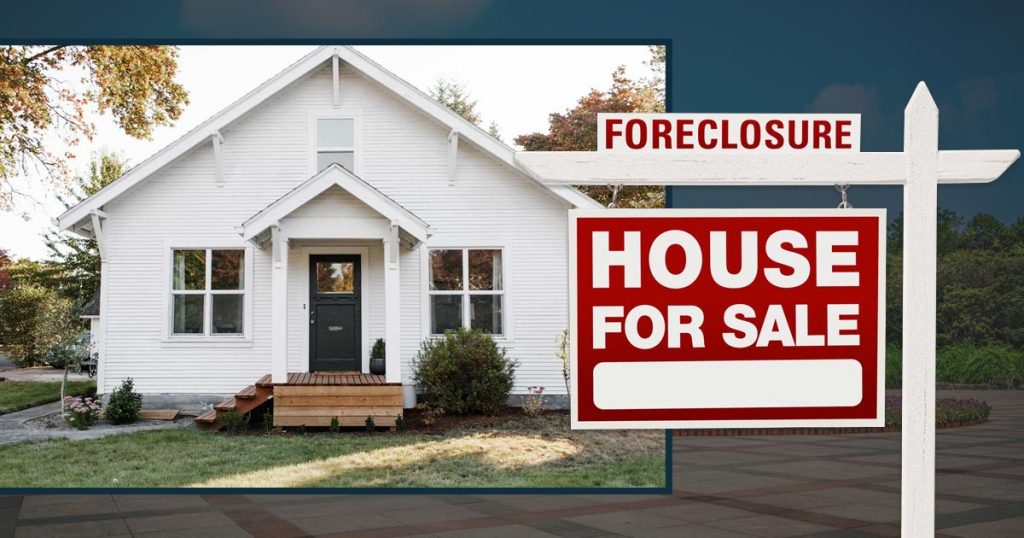Buying a foreclosed property can be a smart move if you’re prepared for the process. Whether you’re looking for your first home or an investment opportunity, it’s important to understand what goes into buying a house in foreclosure. This ensures you’re undertaking the right steps to acquire the property.
Different Ways to Buy a Foreclosed Home
So, how do you buy a foreclosed house? There are several ways to do it, and each one works a bit differently. The risks and rewards for each way also vary.
Pre-Foreclosure
This is the early stage where the homeowner has received a default notice but still owns the property. These homes may not be officially listed for sale. However, some owners try to sell quickly to avoid foreclosure. This route often means negotiating directly with the owner, which can be tricky but rewarding.
Short Sale
In a short sale, the homeowner sells the property for less than what they owe on the mortgage. The lender must approve the offer. The process takes longer than a regular sale but is more structured than buying at auction.
Foreclosure Auction
These sales happen when a lender auctions off a property to the highest bidder. Auctions can be in-person or online. Homes at auction are sold as-is, and many require cash payments. No inspections or appraisals are guaranteed, so it’s best to attend a few auctions as a spectator before participating.
Real Estate Owned (REO)
These are homes that didn’t sell at auction and are now owned by a bank or lender. Buying a house in foreclosure through an REO listing gives you more time to inspect the property and even finance it. Many lenders work with agents to manage REO sales.
Government-Owned Homes
These are foreclosures backed by government loans like FHA or VA. Federal agencies list them through approved brokers and websites like HUD, HomePath, and HomeSteps.
How to Purchase a Foreclosed Home: Step-by-Step
Knowing how to purchase a foreclosed home means going beyond the price tag. Here’s how the process typically works.
Step 1: Know What You Can Afford
Before anything else, decide how much you’re comfortable spending. Foreclosed homes might be cheaper, but you should budget for repairs, title checks, and unexpected costs like unpaid taxes.
Step 2: Work With the Right Professionals
Look for a real estate agent with experience in foreclosures. You should also consider hiring a real estate attorney. They can help spot red flags, review contracts, and guide you through legal steps.
Step 3: Get Preapproved for Financing
Unless you’re buying at an auction where cash is required, get preapproved for a mortgage. This shows sellers or lenders you’re serious. Some buyers explore loan options like FHA 203(k), which covers both the purchase and repairs.
Step 4: Start Searching for Foreclosures
You can find listings in several places:
- MLS through your agent
- Bank and credit union websites
- Government sites like HUD, HomePath, and HomeSteps
- Local newspapers and public records
Some platforms require subscriptions, but many are free and easy to use.
Step 5: Inspect and Appraise the Property
Not all foreclosed homes allow inspections, but if possible, always do one. An inspection helps you understand the condition of major systems like plumbing, HVAC, and the roof. An appraisal is also important if you’re using financing.
Step 6: Check the Title
Even if a lender claims the title is clear, do your own title check. Hire a title company or attorney to make sure there are no unpaid liens or legal issues that could cost you later.
Step 7: Make an Offer or Bid
If you’re going the auction route, come prepared with certified funds. For REO or pre-foreclosures, your agent can submit a written offer. It should include your price, preapproval letter, and an earnest money deposit.
Include contingencies when possible, like inspection or financing conditions, to protect yourself.
Step 8: Close the Deal
Once the offer is accepted and financing is ready, you can proceed to closing. You’ll pay the remaining balance, sign the paperwork, and get the keys. Depending on the type of foreclosure, this could be quick or take several weeks.
Risks You Shouldn’t Ignore
Foreclosures may look like a bargain, but not every deal is a good one. Some properties have serious damage or hidden costs. You might find unpaid utility bills or even squatters living in the home. Delays are common, especially when dealing with banks or government agencies.
You also face tough competition. Many investors move fast with all-cash offers. That’s why preparation is key.
When Foreclosed Homes Might Not Be Right for You
Buying a foreclosed property isn’t ideal for every buyer. If you don’t have money for repairs, prefer fast closings, or feel nervous about legal risks, it may not be the best fit. People who are more cautious with investments or lack a good support network may also want to consider other options.
From Deal to Done Right
Buying a house in foreclosure isn’t just about getting it cheap. It’s about knowing what you’re getting into and being ready. A foreclosed home can be a smart buy if you take the time to understand the process and prepare for the work involved.
Think long-term. Whether you want to live in it, rent it out, or fix and sell, your plan matters. With the right help and a bit of patience, buying a foreclosed property can turn into something really worth it.
